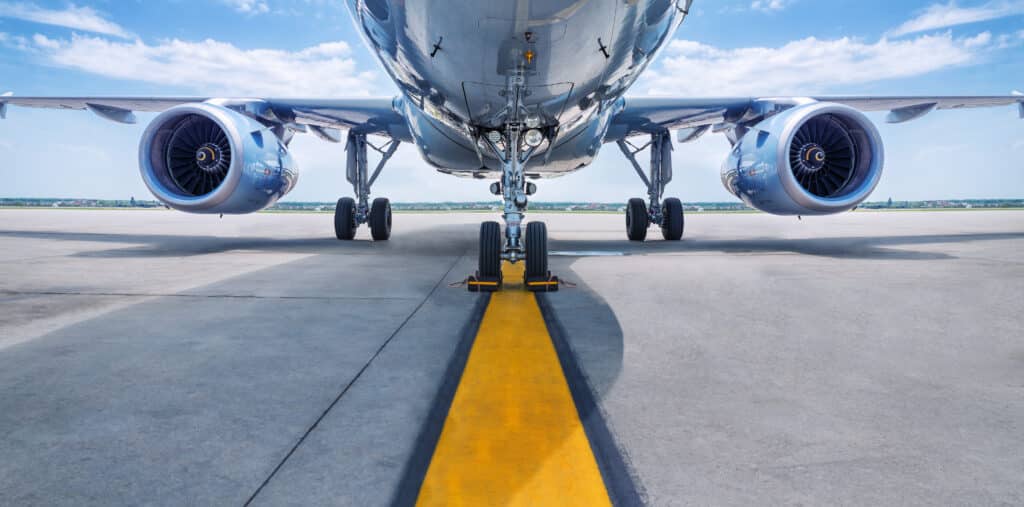How can the aviation industry meet the objectives of the Paris Agreement? In a report published at the end of 2021, the Institut Supérieur de l’Aéronautique et de l’Espace (ISAE-SUPAERO) draws up prospective scenarios for the industry. Using an innovative modelling tool, the authors provide quantified estimates to shed light on the decarbonisation debate. Only commercial aviation – passengers and freight – is considered because of its importance for the climate footprint: it is responsible for 88% of aviation’s CO2 emissions in 20181.
What are the main findings of your study?
Jérôme Fontane. Today, the aviation sector accounts for 2.6% of global CO2 emissions and the annual growth in air traffic is estimated at 3.1% between 2019 and 20502. Even with the most ambitious projections for technological improvements and disruptions, it is not possible to meet the global warming target of 1.5°C by 2100 without making certain compromises: either reduce the growth rate of air traffic and/or increase the sector’s share of the global carbon budget.
Even with the most ambitious projections, it is not possible to meet the global warming target of 1.5°C by 2100 without making certain compromises.
If we aim for a 2°C target, the result is more nuanced. Our models show that an ambitious decarbonisation scenario makes it possible to maintain the forecast growth rate of air traffic as well as the sector’s share of the global carbon budget. This scenario implies technological breakthroughs to improve fuel efficiency and significant decarbonisation using low-carbon fuels for the entire fleet.
You mention the carbon budget, a key notion in your prospective scenarios. Can you go into more detail on this?
J.F. We chose to think in terms of a carbon budget, unlike other models published before our study. The carbon budget is the only relevant scientific measure when working on climate change mitigation trajectories, as indicated by the IPCC.

It corresponds to the maximum cumulative amount of CO2 that can be emitted into the atmosphere before reaching carbon neutrality in order for global warming to remain below a given temperature. For example, we calculate3 that the global median carbon budget between 2020 and 2050 is about 380 GtCO2 if we want to keep warming to 1.5°C. This is the maximum amount of net CO2emissions that should not be exceeded over this period. For a warming maintained at +2°C, this value amounts to 860 GtCO2.
In concrete terms, what does this mean for the aviation sector?
Thomas Planès. The aviation industry is responsible for 2.6% of global man-made emissions. If we continue with this share, the sector will have a carbon budget of 10 to 22.8 GtCO2 by 2050, depending on the level of warming targeted (+1.5°C to +2°C, respectively).
Within the different scenarios being tested, the rate of decarbonisation of the fleet is the major factor for reducing the carbon footprint. Why is this?
T.P. The aviation industry has already made significant improvements in other areas, such as fuel efficiency and aircraft loads. The energy vector – paraffin – has never changed, it is one of the main means of reducing carbon emissions today. Various more or less developed options exist: electricity, hydrogen and synthetic fuels (electrofuel or biofuel). In 2018, alternative fuels – almost exclusively in the form of biofuels – accounted for only 0.004% of world fleet consumption.
Is it really possible to replace the fuels used?
J.F. Depending on the scenario under consideration, the decarbonisation rate varies from 0–75%. It is likely that the reality falls between the two. The most positive scenarios are nevertheless limited by the availability of energy resources. We have estimated – at first glance – that aviation will account for a very significant share of demand in 2050. We must therefore bear in mind that an optimistic scenario in which the entire fleet is decarbonised implies directing these resources towards aviation, to the detriment of other sectors.
Part of the decarbonisation process involves improving energy efficiency.
T.P. We must also bear in mind that part of the decarbonisation process involves improving energy efficiency. This involves both incremental improvements (aerodynamics, propulsion, lighter aircraft) and radical improvements (innovative architectures). The developments in our scenarios are realistic, but the challenge is to scale up. Technological breakthroughs are not enough to significantly reduce carbon emissions: the speed of deployment and renewal of the fleet is a very important parameter, conditioned by the production capacity of manufacturers. In our scenarios, we have assumed annual efficiency gains of between 1–1.5% per year through fleet renewal.
These prospective scenarios only consider CO2 emissions. Yet you point out that non-CO2 effects account for about two-thirds of the climate impact of aviation!
T.P. CO2 emissions are the only ones for which we have a reliable metric – the carbon budget – and they are fairly well quantified today. This is not the case for non-CO2 effects: their impact on global warming is still uncertain. Because of their significant climatic weight, we have carried out a synthetic study including them. We have extended the carbon budget to include non-CO2 effects, and transformed the non-CO2 effects into CO2 equivalents. If we consider a scenario that includes measures to mitigate these effects (e.g. changes in flight paths or engines), it is possible to reduce the sector’s climate impact by a factor of 3 by 2050. This is a major means of reduction, but it does not make CO2 mitigation useless: non-CO2 effects only have a short-term impact on the climate, unlike CO2.
Where should we start today to effectively decarbonise aviation?
T.P. As far as technical factors are concerned, it is essential that the energy sector be strengthened to accelerate the transition to alternative fuels. The speed of fleet renewal is also a factor to be increased today, if possible.
J.F. Our work shows that no one axis is a priority, it is necessary to implement all these measures in parallel. This prospective study is the first academic report on the subject, and we have focused mainly on GHG emissions, one of the only reliable indicators to date. This does not take into account certain aspects of the transition that are essential to consider. For example, other environmental issues such as changes in land use and the availability of energy resources. A lot of work also remains to be done in the socio-economic sphere, such as rethinking the use of aeroplanes.








